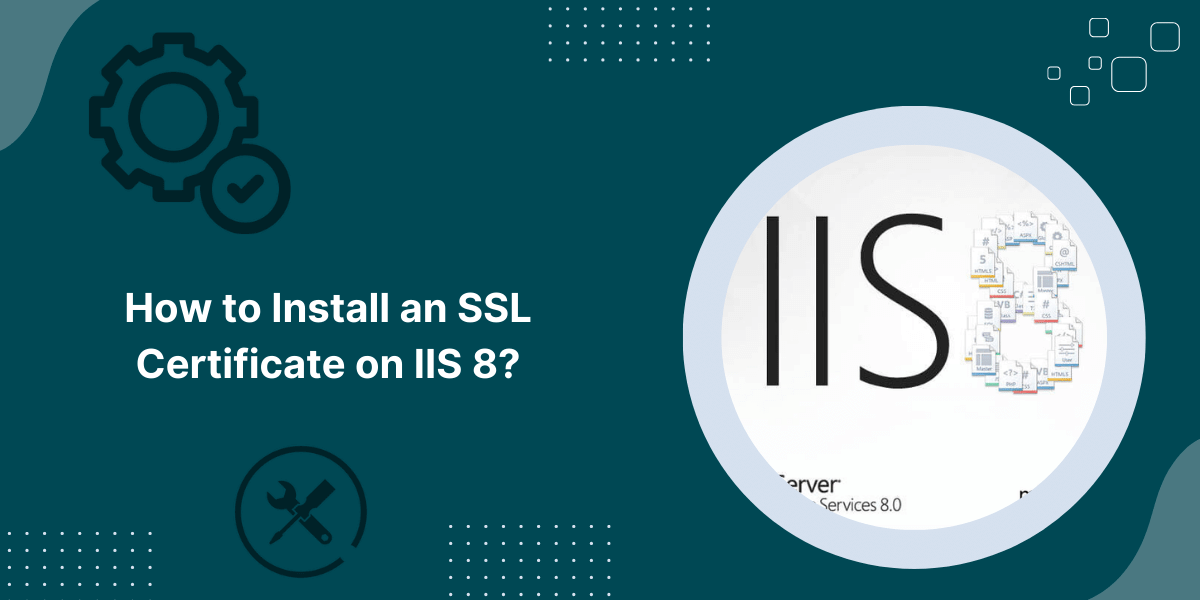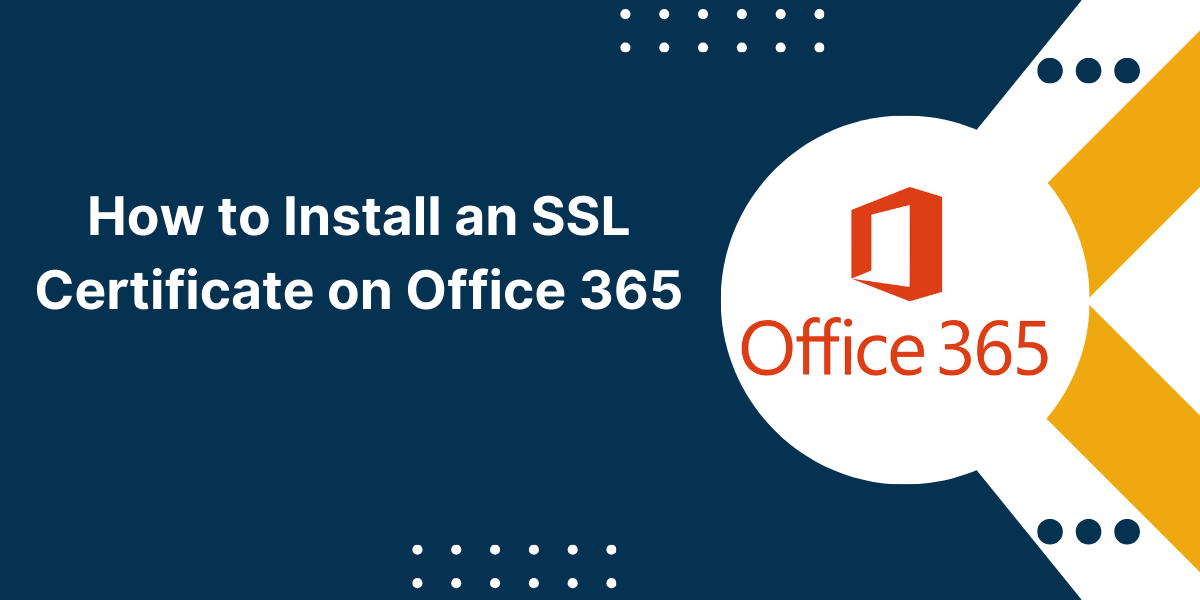Oracle Wallet Manager SSL Certificate Installation Guide
Installing an SSL Certificate on Oracle Wallet Manager allows for secure encrypted connections and authentication. SSL (Secure Sockets Layer) certificates enable secure connections between a client and server by encrypting data transmission and verifying the server’s identity.
Oracle Wallet Manager is a GUI tool to manage PKI credentials like Install an SSL Certificate on Oracle Wallet Manager for Oracle products. It allows you to generate certificate requests, import trusted certificates and private keys, configure certificate revocation lists, and manage Oracle wallets.
This comprehensive guide walks through the steps to Install an SSL Certificate on Oracle Wallet Manager in detail. We will show you how to generate a certificate request, purchase and download an SSL certificate, import the trusted certificate and private key into the Oracle wallet, and configure Oracle to use the SSL certificate for secure encrypted connections. Following this guide will help you successfully Install an SSL Certificate on Oracle Wallet Manager.
Also Read: How to Install an SSL Certificate on Postfix
Prerequisites Before Installing SSL Certificate on Oracle Wallet Manager
Before you can install an SSL certificate on Oracle Wallet Manager, ensure the following prerequisites are met:
- Oracle Wallet Manager is installed on your system. This comes bundled with Oracle server installations.
- You have already requested and received the SSL certificate for your domain from a trusted certificate authority (CA) like DigiCert, Comodo, etc. This would include the certificate file (with .crt extension) along with the root and any intermediate certificate files provided by the CA.
- You have access to the private key file (.key extension) corresponding to the SSL certificate. This is typically generated on your server when creating the certificate signing request (CSR).
- You have the wallet password handy to open the Oracle wallet where the SSL certificate will be imported.
A Step-by-Step Guide to Install SSL Certificate on Oracle Wallet Manager
Follow these steps to install the SSL certificate to Oracle Wallet Manager:
1. Open Oracle Wallet Manager
- Launch the Oracle Wallet Manager application on your system.
- Click on the ‘Wallets’ menu and select ‘Open’.
- Select the wallet you wish to update with the SSL certificate. Enter the wallet password when prompted.
2. Import Trusted Certificates
- In the Oracle Wallet Manager, click on the ‘Trusted Certificates’ tab.
- Click on ‘Import’ and select the root certificate file (.crt extension) received from the CA.
- Repeat this to import any intermediate certificate files provided.
- The trusted certificates will now be added to the wallet.
3. Import User Certificate
- Go to the ‘Certificates’ tab.
- Click on ‘Import’ and select the SSL certificate file (.crt extension) for your domain.
- The certificate will be added to the list under the ‘Certificates’ tab.
4. Import Private Key
- Go to the ‘Keys’ tab and click on ‘Import’.
- Select the private key file corresponding to the SSL certificate and enter the key password if prompted.
- The private key for the SSL certificate will now be installed into the wallet.
5. Configure SSL Certificate
- Under the wallet’s ‘Certificates’ tab, right-click on the newly imported domain certificate.
- Select ‘Configure’ and mark the certificate as ‘Enabled’.
- Choose the configuration as ‘Oracle HTTPS Server’.
- Click OK to confirm.
The SSL certificate is now fully configured and ready to be used by Oracle for secure HTTPS connections.
6. Save the Wallet
- Go to the wallet menu and select ‘Save’ to persist all the changes.
- Close the wallet once saved. Enter the wallet password when prompted.
The SSL certificate is now successfully installed and ready to be utilized!
Post-Installation Considerations
Once you have installed the SSL certificate to the Oracle wallet, keep these points in mind:
- Restart any relevant Oracle services that use this wallet to force the configuration changes to take effect.
- Move or replace the wallet if needed. The services using the wallet for SSL must be updated with the new wallet location.
- For certificates nearing expiration, make sure to renew them well in time and repeat the installation process.
- Set up a reminder to renew the SSL certificate before expiration to avoid any downtime.
- Ensure the root and intermediate certificates provided by the CA are still valid and not revoked.
- Follow security best practices in restricting access to the wallet and keeping the wallet password secure.
Troubleshooting Common Issues
Here are some common troubleshooting tips for SSL certificate installation on Oracle Wallet Manager:
Certificate import fails
- Ensure the certificate and key file formats are supported by Oracle Wallet Manager (typically .crt and .key).
- Verify the certificate and private key match. The public key in the certificate should match the private key.
- Double check the certificate import to ensure the root/intermediate CA certificates are also imported as trusted certificates.
SSL connection fails
- After importing the certificate, validate it is configured for ‘Oracle HTTPS Server’.
- Check that the relevant Oracle services are restarted to load the new wallet contents.
- Confirm there are no invalid or expired trusted certificates in the wallet.
- Verify that the server hostname matches the common name (CN) in the SSL certificate.
Access issues after certificate installation
- Remove the old wallet and recreate it to generate new key pairs.
- Revert the configuration and any changes made to the Oracle instance.
- Review permissions, ownerships and access control lists set on the wallet directory.
Conclusion on Install SSL Certificate on Oracle Wallet Manager
Installing SSL certificates on Oracle Wallet Manager allows you to encrypt sensitive data and securely identify your servers to clients. By following the steps outlined in this guide, you can properly import trusted CA certificates, install the server certificate and private key, and configure the SSL certificate for Oracle. Proper SSL configuration is vital for the security of critical Oracle deployments involving sensitive and confidential data. This step-by-step guide serves as a handy reference to guide you through the complete process.
Frequently Asked Questions about Install SSL Certificate on Oracle Wallet Manager
Can I install multiple SSL certificates in an Oracle wallet?
Yes, you can install multiple SSL certificates in a single Oracle wallet. Import all the required certificates and private keys and ensure each certificate is correctly configured for the relevant Oracle service.
What is the default wallet location in Oracle?
The default wallet location is in the directory – ORACLE_BASE/admin/DB_UNIQUE_NAME/wallet. However, this can be changed by setting the oracle wallet location parameter.
What happens if the imported SSL certificate expires?
If an SSL certificate expires, the secure connections via HTTPS using that certificate will start failing. Make sure to renew and re-import the certificate to the wallet before expiration.
Is there an option for auto-renewal of SSL certificates in Oracle?
No, Oracle does not have an automated mechanism to renew and update SSL certificates. System administrators have to manually renew the certificates before expiration and re-import them into the wallets.
Can I store non-SSL certificates in Oracle Wallet Manager?
Yes, Oracle Wallet Manager allows you to store other certificates for client and user authentication. However, these will not enable HTTPS for Oracle – only trusted CA certificates and server SSL certificates can enable SSL/TLS connections.



